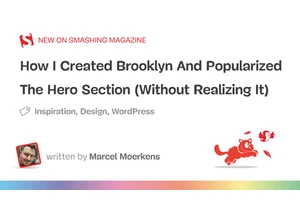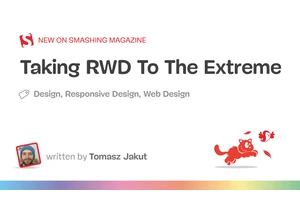We know that browsers do all sorts of different things under the hood. One of those things is the way they not only fetch resources like images and scripts from the server but how they prioritize those resources. Chrome and Safari have implemented a “Tight Mode” that constrains which resources are loaded and in what order, but they each take drastically different approaches to it. With so little information about Tight Mode available, this article attempts a high-level explanation of what it is, what triggers it, and how it is treated differently in major browsers. https://smashingmagazine.com/2025/01/tight-mode-why-browsers-produce-different-performance-results/
Connectez-vous pour ajouter un commentaire
Autres messages de ce groupe

In 2013, Marcel Moerkens was working on Brooklyn, his WordPress theme, and he needed a way to make it stand out from the pack of other WordPress themes. Little did he know that the intro section he ca

Tomasz Jakut reflects on the evolution of web design, from the days of table-based layouts and Flash games to the rise of responsive web design (RWD), which often feels like the end of history in web

In today’s web development landscape, the concept of a monolithic application has become increasingly rare. Modern applications are composed of multiple specialized services, each of which handles spe

Let’s make the most of the shortest of all months, with a new collection of desktop wallpapers celebrating new opportunities, sweet memories, happy little moments, and everything in between. All of th

Design systems play a crucial role in today’s digital landscape, providing a blueprint for consistent and user-friendly interfaces. But there’s another tool that deserves equal attention: the digital

It’s not always the big features that make our everyday lives easier; sometimes, it’s those ease-of-life features that truly enhance our projects. In this article, Brecht De Ruyte highlights two such

After months of anticipation, debate, and even a bit of apprehension, Svelte 5 arrived earlier this year. Frederick O’Brien caught up with its creator, Rich Harris, to talk about the path that brought
